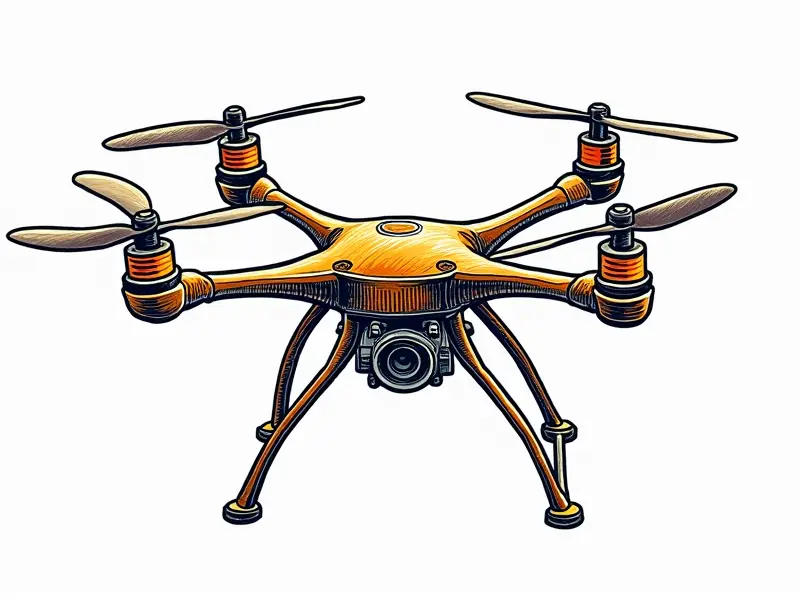Walkera FPV racing setup

The Ultimate Guide to Walkera FPV Racing Build
Welcome to the world of high-speed, adrenaline-pumping fun with your Walkera FPV racing setup. Whether you're a seasoned pro or just starting out, this comprehensive guide will help you build and optimize your Walkera FPV rig for maximum performance and enjoyment.
Beginner's Guide to Walkera FPV
If you're new to FPV (First Person View) racing with Walkera drones, it can seem daunting at first. However, with the right gear and a bit of practice, you'll be flying like a pro in no time.
Understanding the Basics
- FPV System: This includes your video transmitter (VTX), receiver, and goggles or monitor. The Walkera FPV system is designed for clear, lag-free transmission.
- Drone Frame: Choose a lightweight frame that can handle high speeds without compromising stability.
- Battery: High-capacity LiPo batteries are essential for extended flight times and peak performance.
Tips for Beginners
- Start with a basic setup to get comfortable with the controls before upgrading.
- Practice flying in open spaces to build confidence and improve your skills.
- Join local FPV racing communities or online forums to learn from experienced pilots.
Optimal Gear for Walkera FPV Racing
To get the most out of your Walkera FPV setup, it's crucial to have the right equipment. Here are some essential components:
Vital Components
- High-Performance VTX: A reliable transmitter that can handle high frame rates and low latency.
- Lightweight Frame: Opt for a carbon fiber or aluminum frame to reduce weight while maintaining strength.
- Battery Management System (BMS): Ensure your batteries are properly charged and monitored for safety.
Additional Accessories
- FPV Goggles: High-resolution goggles with adjustable brightness and latency settings.
- Flight Controller (FC): A robust FC that supports advanced features like auto-leveling and GPS lock.
- Prop Guards: Protect your props from crashes and maintain flight stability.
Customize Your Walkera FPV Experience
Your Walkera FPV setup is only as good as the customization you put into it. Here are some ways to tailor your rig for maximum performance:
Tuning Flight Characteristics
- PID Settings: Fine-tune your flight controller's PID settings for optimal stability and responsiveness.
- Frame Adjustments: Modify the frame to suit different flying conditions or personal preferences.
- Battery Configuration: Experiment with battery placement and capacity to optimize weight distribution and power output.
Upgrading Components
- Motor Upgrades: Swap out stock motors for high-performance units that deliver more thrust and speed.
- ESC (Electronic Speed Controller) Enhancements: Choose ESCs with higher current ratings to handle increased power demands.
- Propeller Selection: Use larger or smaller props depending on your desired flight characteristics.
Quick Start: Walkera FPV Racing
If you're ready to hit the skies, follow these steps to get started with your Walkera FPV setup:
Pre-flight Checklist
- Battery Check: Ensure all batteries are fully charged and securely connected.
- VTX Settings: Configure your VTX for optimal range and clarity.
- Goggles Calibration: Adjust the latency settings in your goggles for smooth, lag-free video transmission.
Flying Tips
- Start with slow, controlled flights to get a feel for the drone's responsiveness.
- Practice flying in different weather conditions and environments to adapt your skills.
- Always fly within line of sight until you're comfortable with FPV technology.
Maximize Performance with Walkera FPV
To truly excel in FPV racing, it's essential to fine-tune every aspect of your setup. Here’s how:
Advanced Tuning Techniques
- Dynamic PID Adjustments: Use telemetry data to dynamically adjust PID settings during flight.
- Battery Management: Monitor battery voltage and temperature in real-time for optimal performance.
- Frame Optimization: Continuously refine your frame design based on feedback from test flights.
Performance Enhancements
- High-Resolution VTX: Upgrade to a high-resolution transmitter for clearer video transmission.
- Advanced Flight Controller: Choose an FC with features like auto-tuning and telemetry support.
- Propeller Tuning: Experiment with different prop sizes and materials to find the perfect balance of speed and stability.
Top Components for Walkera FPV
The right components can make all the difference in your FPV racing experience. Here are some top-rated parts that will elevate your setup:
Best VTX Transmitters
- Runcam Swift 2: Known for its high frame rate and low latency.
- TBS Unify Pro X: Offers excellent range and clarity with advanced features like telemetry support.
Superior Flight Controllers
- Betaflight Compatible FCs: Supports a wide range of customization options for optimal performance.
- TBS Crossfire Mini: Compact and lightweight, with built-in telemetry support.
High-Performance Motors & ESCs
- KV260 1708 Series: High-torque motors for maximum thrust and speed.
- T-Motor F40 Pro: Advanced ESC with high current handling capabilities.
Boost Performance with Walkera FPV
To take your Walkera FPV setup to the next level, consider these performance-boosting strategies:
Advanced Flight Techniques
- Seriously Practice: Dedicate time each week to honing your flying skills.
- Track Testing: Use a dedicated FPV racing track for consistent performance testing.
- Data Analysis: Utilize flight data logs to identify areas for improvement.
Tech Innovations
- Real-time Telemetry: Monitor key metrics like battery voltage and motor RPM during flight.
- Auto-Tuning Features: Leverage advanced FC features to automatically adjust PID settings.
- Custom Firmware: Flash custom firmware for enhanced performance and functionality.
Conclusion
Your Walkera FPV setup is a powerful tool that can be tailored to your specific needs. By following these tips, you'll be well on your way to achieving top-notch performance in the air. Whether you're just starting out or looking to refine your existing setup, there are always ways to improve and enhance your flying experience.

